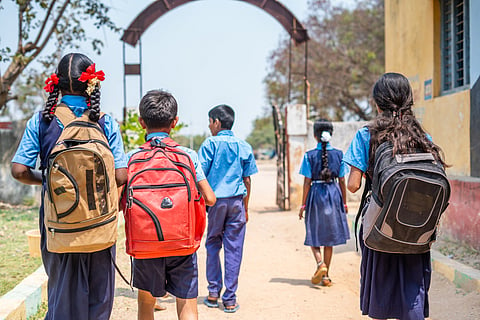

New government report shows sharp rise in vitamin D and zinc deficiency among adolescents aged 10–19.
Vitamin D deficiency affects 24% of older children, with sunlight, diet and pollution identified as key factors.
Zinc deficiency prevalence rises to 32% in adolescents, linked to stunting and higher illness rates.
High triglyceride levels most common in children aged 5–9, particularly in West Bengal, Sikkim and Assam.
Infant and under-five mortality rates show modest national improvement, though rural–urban gaps persist.
Indian children aged 10-14 are showing rising levels of vitamin D and zinc deficiency, according to Children in India, a publication released by the Union Ministry of Statistics and Programme Implementation.
The report, which examines the condition of children across indicators such as survival, development and protection, found that vitamin D deficiency was present in 14 per cent of children aged 1-4 years, 18 per cent in those aged 5-9, and 24 per cent among 10-19-year-olds.
Vitamin D is crucial for bone health, immune function and overall growth. Its deficiency can lead to significant health problems. A 2022 systematic review noted that vitamin D deficiency is a major public health issue globally, including in countries with abundant sunlight.
A Scientific Reports paper from the same year pointed out that India’s high prevalence of deficiency in a sun-rich environment is linked to multiple factors: inadequate exposure to sunlight; dietary shortcomings such as insufficient vitamin D and calcium intake, high phytate and phosphate consumption, caffeine intake, lactose intolerance; as well as darker skin pigmentation, pollution blocking ultraviolet rays, genetic polymorphisms and higher body fat.
Zinc deficiency was also highest in adolescents aged 10-19, with prevalence at 32 per cent. In comparison, 19 per cent of children aged 1-4 and 17 per cent of those aged 5-9 were found to be zinc deficient. Zinc is vital for growth and general health, and its deficiency is considered a major contributor to stunting. A 2021 study attributed around 4 per cent of global morbidity and mortality in young children to zinc deficiency.
Another 2021 study reported similar findings, noting that low serum zinc concentrations were most prevalent among adolescents (31 per cent), compared with school-aged children 5-9 (16 per cent) and preschoolers 1-4 (18 per cent). The prevalence was higher in children with severe stunting, underweight, or recent illness such as diarrhoea, cough, malaria or dengue.
Among children aged 10-19, lifestyle-related conditions were also recorded: pre-diabetes (10.4 per cent), diabetes (0.6 per cent), high total cholesterol (3.7 per cent), high low-density lipoprotein (3.8 per cent), low low-density lipoprotein (28.2 per cent) and hypertension (4.9 per cent).
High triglyceride levels were found more commonly in children aged 5-9 (34 per cent) than in those aged 10-19 (16 per cent). West Bengal, Sikkim and Assam had the highest percentage of younger children with raised triglycerides, while West Bengal, Sikkim and Manipur topped the list for older adolescents.
Triglycerides are one of the body’s main lipid groups, and researchers warn that persistently raised levels in childhood and adolescence may increase the risk of premature cardiovascular disease in adulthood.
India’s infant mortality rate (IMR) stood at 25 deaths per 1,000 live births in 2023, with slightly higher rates among males (26) than females (25). This marks a modest improvement from 2022, when the IMR was 26.
The rural IMR (28) remains notably higher than the urban rate (18), underlining persistent inequalities in access to quality healthcare. Chhattisgarh and Madhya Pradesh recorded the highest IMR at 37, while Kerala reported the lowest at 5.
The under-five mortality rate — the probability of a child dying before the age of five per 1,000 live births — was estimated at 29, ranging from 33 in rural areas to 20 in urban areas. The highest rates were recorded in Madhya Pradesh (44), Uttar Pradesh (42) and Chhattisgarh (41). Kerala again reported the lowest, with just 8 deaths per 1,000 live births.